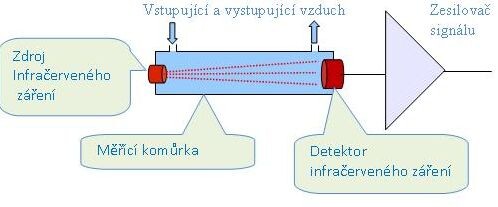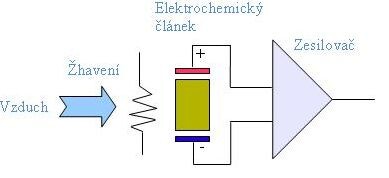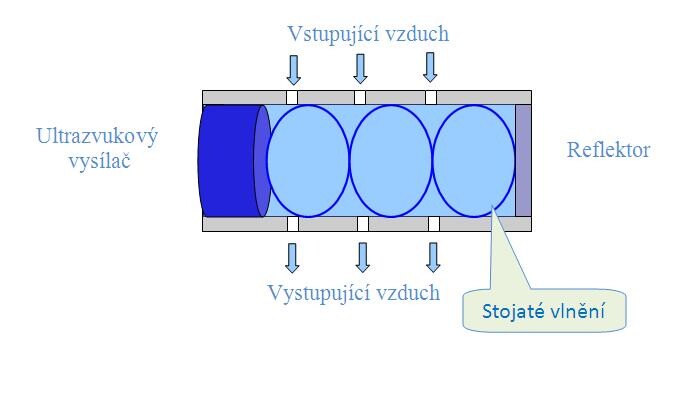Air quality sensors work on several different principles. The main ones are described here:
NDIR = Non-Dispersive Infrared
These sensors work on the principle of measuring the attenuation of infrared radiation (of a specific wavelength) in the air.
The sensors consist of:
- infrared radiation sources (bulb)
- light guide tube
- infrared detector with the appropriate filter
The signal from the infrared detector is further amplified and then the attenuation of the radiation, which is caused by the collision with carbon dioxide, is evaluated using other electronics. On this basis, the current concentration of CO2 in the air is calculated. To simplify - the more CO2, the more infrared radiation is attenuated.
NDIR sensors are generally very accurate and long-term stable. The advantage is that they measure the concentration from a zero value, they can also measure a high concentration of CO2. Currently, we have the NDIR principle applied in all carbon dioxide concentration sensors. Their stability and service life is more than 10 years.

Electrochemical sensors – measurement of volatile organic substances and humidity
These sensors usually consist of an electrochemical cell with a solid electrolyte (= solutions or melts that conduct an electric current). This cell is heated to working temperature by additional annealing. Chemical reactions similar to those in a fuel cell occur at the cell electrodes, where oxygen is consumed and an electromotive force is generated at the cell electrodes.
By measuring this electromotive force using special electronics, the concentration of CO2 in the air is determined. The main advantage of these sensors is high sensitivity and excellent selectivity for carbon dioxide. They are usually cheaper than NDIR sensors, but with significantly lower lifetime (approx. 2 years) and accuracy. That is why we have moved away from these sensors.

Electroacoustic sensors
Electroacoustic sensors work on the principle of evaluating changes in the frequency of ultrasound in a mechanical resonator. Using electronics, the change in frequency of ultrasonic waves is evaluated and based on the dependence of the change in frequency on the concentration of CO2 in the air, the current concentration of CO2 is determined.
The main advantage of these sensors is long-term stability without the need for recalibration.

The article is prepared according to the information provided by Protronix, a Czech manufacturer of air quality sensors, further information, including the range of supplied sensors, can be found on their website cidla.cz.
 English
English